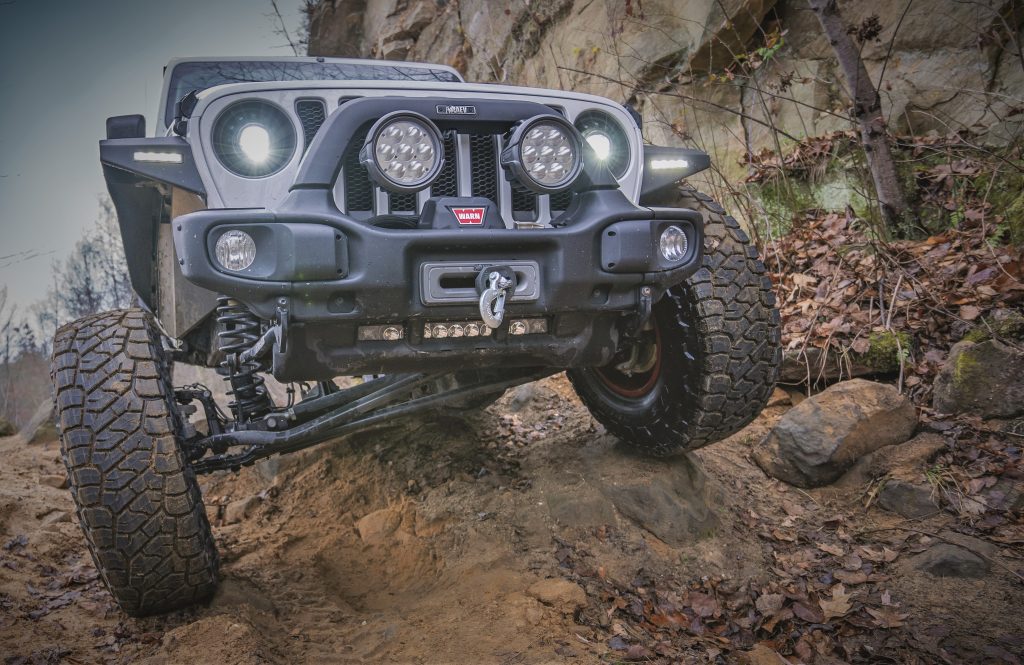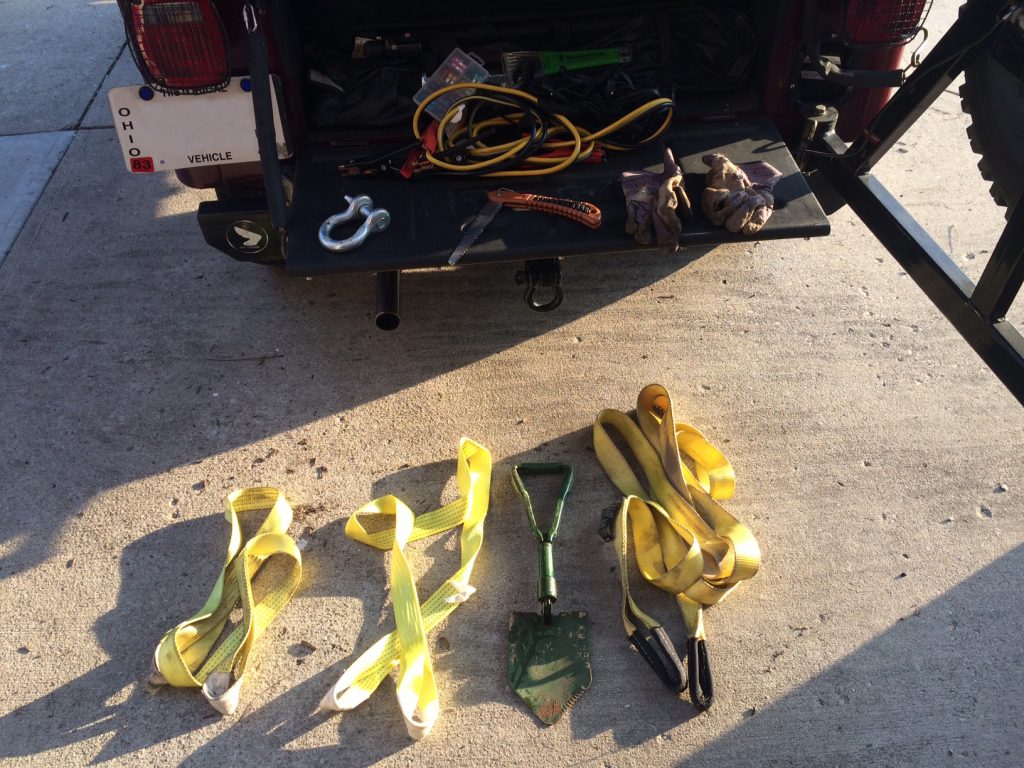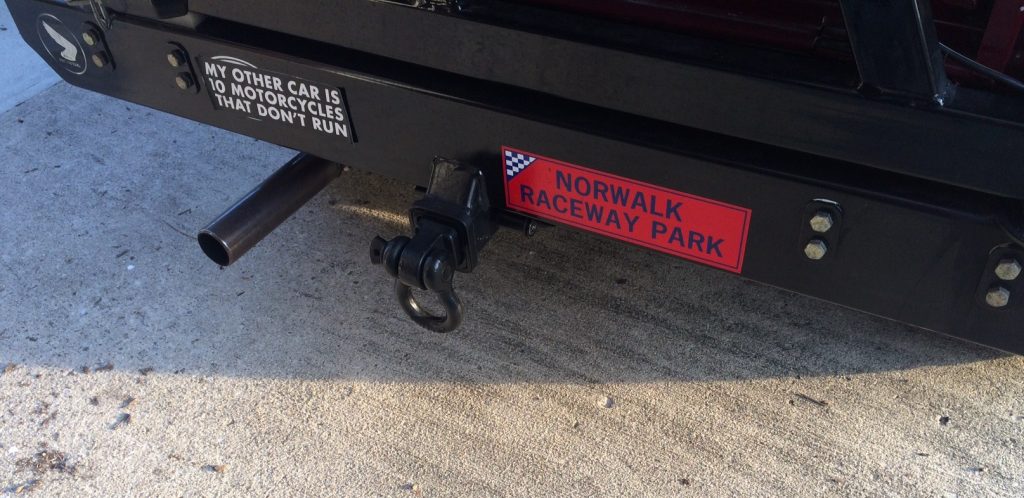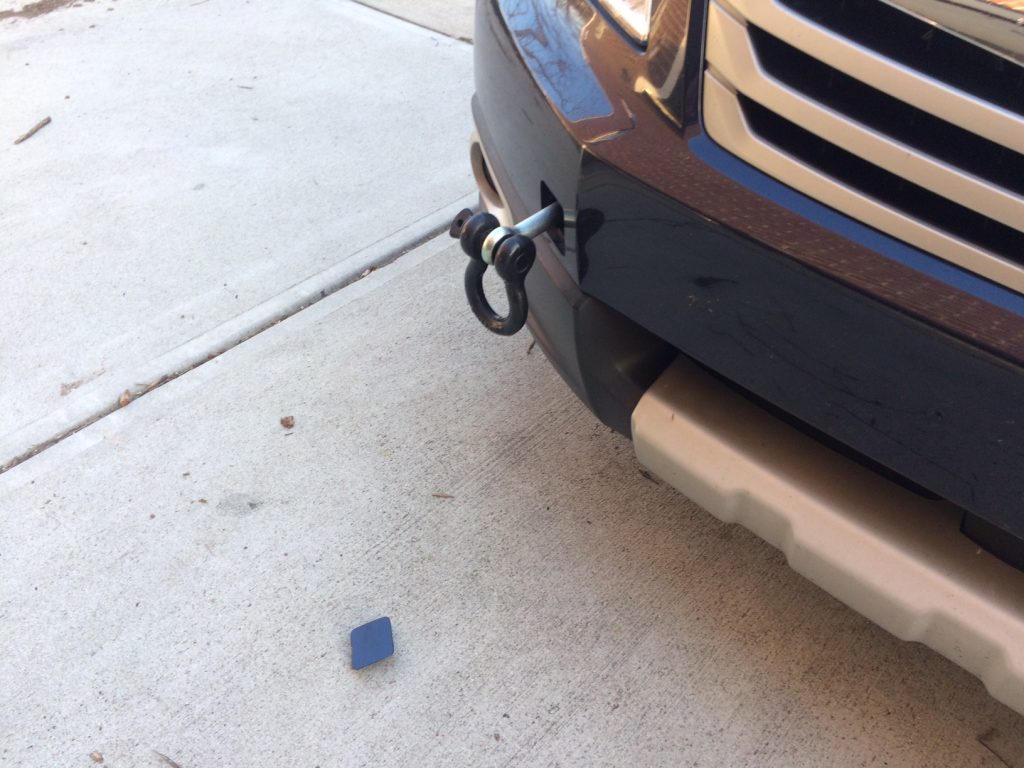While it’s easy to love the idea of overlanding through a pristine landscape, off-roading is tough. And having the right overlanding, off-road, and car camping gear is vital. So we’ve got a few Overlanding Essentials articles to help you tackle the terrain.
Not sure what overlanding is? Read this.
Let’s Talk About Vehicle Towing & Recovery Gear.
The first step in selecting your recovery gear is to assess what kind of overlanding you’re getting into. A recovery kit for an off-roader traversing into uncharted wilderness for weeks will need a lot more than say, a family that visits a National Park for a weekend of car camping.
Regardless of where you’re going, assume you’re going to get stuck at some point. Now that doesn’t necessarily mean that you will, nor does it mean you must outfit your overlanding rig with thousands of dollars worth of winches, bumpers, and towing gear—but you should have some basics covered to be prepared.

Overlanding Recovery Gear Essentials: Tools
So then, what is basic off-road recovery gear? For starters, you’ll want some tools for the terrain (and that means more than screwdrivers and sockets). We’re talking things like shovels, flashlights, and saws. They can be worth their weight in gold if you have to see, dig, or cut your way out of a jam.
We’ll have an entire post dedicated to overlanding tools. Check back here in a few weeks.
Again, assess what level of overlanding you’re anticipating. You may only need a small complement of basic hand tools to get by, particularly if you’re in a well trafficked area with Park Ranger support.
And that brings us to another vital point to consider: communications. You might be able to skate by with just a well-charged mobile phone. But if you’re going out of cell tower range, then a mobile radio is an essential part of any remote recovery effort.
Stay tuned, pun intended, because we’ll have a standalone article on communications later too.

Overlanding Recovery Gear Essentials: Traction
From slick rocks to high water, sand to snow, a single trail can feature wildly different terrain, so it’s nigh-impossible to be ready for it all. And even the most seasoned overlander gets stuck from time to time—it’s an almost literal rite of passage.
Remembering that all overlanding experiences will be different, you should prepare accordingly. First and foremost though, is to ensure your tires are up to the task. Four wheel drive will not compensate for worn, bald rubber.
And depending on the terrain, a common off-roading trick is to air-down your tires a bit, essentially lowering your tires’ air pressure a few PSI to create a larger contact patch with the ground. CAUTION though, make sure you’re able to air back up to proper pressure with a portable air compressor when it’s time to hit the highway home. You should probably bring along a tire repair kit too—punctures are common off-road.
It’s often a smart idea to bring some sort of traction aid like sand, wood chips, or kitty litter to spread beneath your tires if you get stuck in mud or snow. (Folks from northern states know what we’re talking about here.) Long boards like 2x6s can come in handy too. Companies even make reusable traction mats for this sort of thing.
Overlanding Recovery Gear Essentials: Towing
Now we’re getting a bit beyond the essentials and basics. For more serious overlanding adventures, you may want to think about towing equipment. The right towing recovery gear can help you (with the aid of a winch, come-along, or another vehicle) extract your ride.
But before we get to the cool stuff like winches and snatch blocks, let’s talk about the most important piece of towing gear: Gloves.
Yeah, gloves are a bit anticlimactic, but they’re nonetheless essential. Before you uncoil a recovery strap, don a pair of durable gloves first.
Now, let’s discuss recovery straps and ropes. These play a pivotal role in any recovery effort. Obviously you can choose your rope or strap based on their respective weight ratings and overall length, but there are a few more facets to consider.
For starters, ropes and straps typically either have loops or metal hooks on the end. You’ll want the ones with looped ends, as they’re a great for attaching shackles and D-rings (more on that in a sec). You can also find a lot of ropes that boast some sort of kinetic energy benefits—they’re designed to stretch, then recoil quickly for extra pulling power.

It’s common to attach your rope or straps to clevis loop (AKA D-ring) shackles. These tow shackles come in a wide range of styles and offer a secure way to connect ropes together and to the vehicle. Shackles are vital and versatile, so make sure you have enough to make all your connections.
No recovery job is ever straightforward. And we mean that literally. You may find your rope bending or twisting up, left, under, etc., and that’s where a snatch block or pulley block can come in very handy. In addition to giving you a mechanical advantage, a snatch block prevents your rope or cable from cutting against trees and rocks. They can be secured by shackles, additional rope, or tree saver straps.
And speaking of tree saver straps, you’ll need one. That’s because they serve two key purposes. They, duh, protect trees from recovery rope and cable damage and they provide a place to secure your winch line to. (You should never, ever, ever loop your winch cable or rope around a tree and secure it to itself. It can severely damage the cable and tree, often with catastrophic results.)

When it comes time to attach your rope or cable to your vehicle, ensure you’re using the right place. Off road vehicles, like Jeeps, often have recovery tow hooks or loops visible. But for more street-focused vehicles, the tow hook is often separate, stowed away with the spare tire or roadside emergency kit. You then have to install the tow hook yourself, and the location is typically hidden behind a grille or panel on the bumper. Your vehicle owner’s manual should show you how to properly secure a tow hook or loop.
Perhaps now’s a good time to mention that trying to yank a stuck vehicle out, particularity a uni-body, can cause unintended and consequential damage to the vehicle. Before you venture off road, understand the inherent risks involved. Even a relatively uneventful day off road can introduce unnatural flex into a vehicle, which can lead to poorly closing doors, distorted window seals, wheel misalignment, and a host of other, sometimes significant, issues.
Now time for the main event: winches. And the simple reality is that a winch is often unnecessary for simple, on-trail driving. Besides, on a lot of vehicles (particularly street-biased crossover SUVs), installing a winch requires some work. We’re talking a new bumper, wiring, and perhaps some cutting and drilling.
You don’t need to make a serious investment to enjoy an initial foray into overlanding. Sometimes a simple come-along can provide that all-important initial tug to get your vehicle out of a rut or hole. (And some off-road jacks even double as a winch recovery tool.)
That said, if you plan to do any overlanding in rough, uncharted terrain, a winch can be an invaluable piece of recovery gear. You have no shortage of winch options, and the amount of pull rating you’ll need (IE, the heavier vehicle you have) should be your initial benchmark to choosing the right winch for your needs.
You’ll also have to choose between traditional steel winch cable or synthetic winch rope. The folks at Warn have a good discussion on the topic.
If you’re considering a winch, here are some other posts you should read:
- Winching Out: Proper Winching Techniques & Tips
- Mailbag: Choosing the Proper Pull Rating When Buying a Winch
- Video: How to Bed-In a Winch
Overlanding Recovery Gear Essentials: Takeaway
Since every overlandering experience is different, there’s no way to make a completely comprehensive list of everything you’ll need. At the least though, this should get you on the way to a happy excursion.
Do you have any off-road recovery tips or essentials to share? Let us know in the comments below.
And check out the other stories in our expanding Overlanding Essentials series.

[…] While it’s easy to fall in love with the idea of overlanding through a pristine landscape, the reality is that venturing off road can be tough. And having the right […] Read full article at http://www.onallcylinders.com […]
[…] Shovel. We mentioned this in our Overlanding Recovery Gear article, but a shovel is an essential piece of kit to help dig your way out of a […]
Very informative article, Paul. Thanks for sharing it with me.
You did a great job explaining why this gear is important for a fun and safe overland adventure.
Might I recommend linking to our article on how to use traction boards and recovery straps. It would compliment this article well. (linked to this comment)
Happy adventures,
Kyle